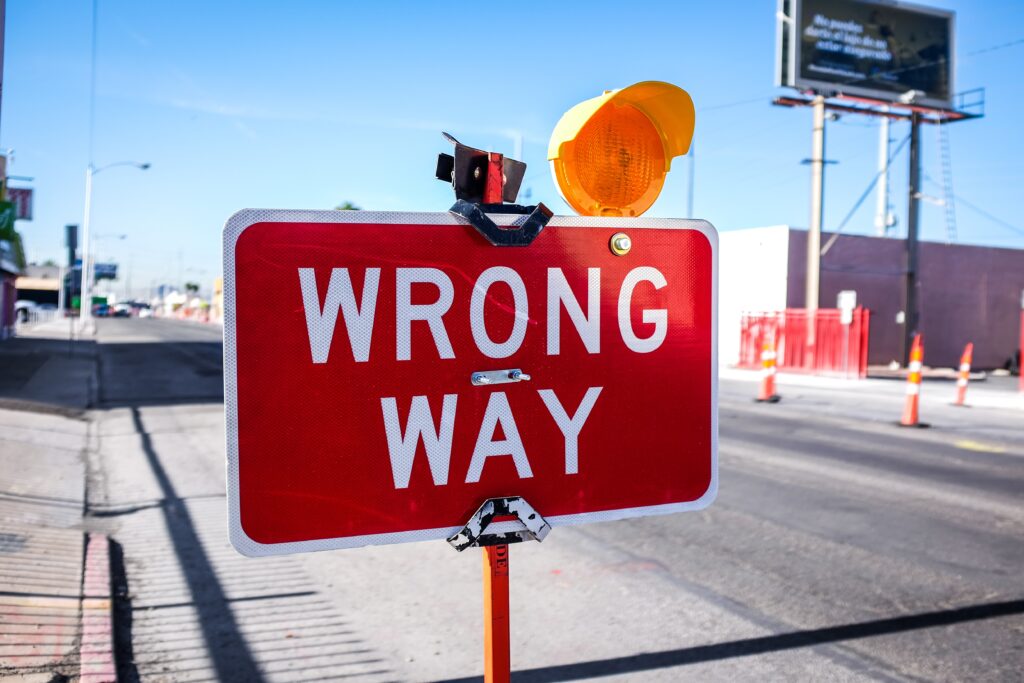2025 DAM Forecast: Key Trends and Insights for Digital Asset Management
17 March 2025
As we venture into 2025, the landscape of Digital Asset Management (DAM) is set to evolve dramatically. In a recent discussion featuring industry experts Misti Vogt and Brian McLaughlin from Orange Logic, we explored the trends that will shape the future of DAM. This blog post summarizes those insights, focusing on the critical shifts that organizations must embrace to enhance their DAM strategies and drive business growth.
The State of the DAM Market
The current state of the DAM market reveals a significant shift in how organizations view and utilize DAM systems. Recent data shows that many companies are struggling with legacy systems that limit user adoption and efficiency. For instance, a staggering 88% of companies that transitioned to Orange Logic reported low user adoption rates, primarily due to their reliance on outdated systems.
In a recent poll conducted among customers transitioning to Orange Logic, 41% identified content silos across teams as their biggest challenge, while 37% cited low user adoption. These statistics underscore the urgent need for modern DAM solutions that prioritize flexibility, searchability, and scalability.
Key Trends Shaping the Future of DAM
As we look ahead, three pivotal trends are emerging in the DAM landscape: Connected DAM, Adaptive DAM, and Autonomous DAM. Let’s dive deeper into each of these trends.
1. Connected DAM
Connected DAM refers to the integration of DAM systems within a broader enterprise ecosystem. This trend is vital as organizations increasingly rely on interconnected platforms to enhance collaboration and streamline workflows.
Hyper-integration is a significant aspect of this trend, allowing users to access and utilize assets seamlessly across various applications without needing to log into the DAM itself. This integration is made possible through sophisticated connectors and APIs that facilitate smooth interactions between systems.
However, with increased integration comes the challenge of governance. Organizations must ensure that the metadata and media remain consistent and accurate across platforms. As such, DAM managers and archivists will play a crucial role in enforcing governance practices within this connected ecosystem.
2. Adaptive DAM
The concept of Adaptive DAM emphasizes the need for DAM systems to evolve alongside the changing requirements of users. Rather than forcing users to adapt to a rigid system, Adaptive DAM allows for tailored views and features that cater to the unique needs of different teams.
This adaptability is driven by user feedback and the recognition that diverse teams have diverse needs. For instance, marketing teams may require different functionalities compared to product development teams. By accommodating these varying needs, organizations can enhance user satisfaction and promote greater adoption of DAM systems.
Moreover, the emergence of portals—specialized user experiences for targeted audiences—illustrates the potential of Adaptive DAM. These portals enable distinct user groups to access relevant content without being overwhelmed by unnecessary information, thus improving efficiency and satisfaction.
3. Autonomous DAM
Perhaps the most exciting trend on the horizon is the rise of Autonomous DAM systems. These systems leverage artificial intelligence and machine learning to automate various aspects of digital asset management, from tagging and categorization to predictive analytics.
An Autonomous DAM is designed to learn and adapt based on user interactions and historical data. This capability allows the system to create workflows autonomously, reducing the manual effort required by users. Additionally, it can self-correct any issues that arise within workflows, enhancing overall efficiency.
For organizations, this means that the DAM can take on more responsibilities, allowing users to focus on strategic initiatives rather than getting bogged down in operational tasks. The goal is to create a system that not only manages assets but also enhances creativity and productivity across the organization.
The Importance of Content Authenticity
As digital content proliferates, the need for authenticity becomes paramount. Organizations must ensure that their content is genuine and reliable, particularly in an era where misinformation can spread rapidly.
The Content Authenticity Initiative and C2PA (Coalition for Content Provenance and Authenticity) are two efforts aimed at enhancing content authenticity. By adopting these frameworks, organizations can track the provenance of their digital assets and verify their integrity throughout the content lifecycle.
Sustainability in DAM
Sustainability is another critical consideration for organizations as they develop their DAM strategies. With increasing scrutiny on environmental impact, companies must evaluate their digital footprint and seek ways to reduce it.
One approach is to leverage DAM systems to streamline workflows and minimize waste. For instance, organizations can use 3D modeling and virtual production processes to reduce the need for physical prototypes, thereby decreasing their carbon footprint.
Additionally, as organizations adopt AI-driven solutions, they must consider the sustainability implications of these technologies. AI can consume significant resources, so it’s essential to implement efficient models that align with sustainability goals.
Preparing for the Future: Actionable Insights
As organizations look to the future, several actionable insights can help them navigate the evolving DAM landscape:
- Embrace Integration: Prioritize connected DAM solutions that integrate seamlessly with other enterprise systems to enhance collaboration and efficiency.
- Focus on Adaptability: Ensure that your DAM system can adapt to the unique needs of various teams, fostering higher user adoption rates.
- Leverage Automation: Invest in Autonomous DAM technologies that reduce manual tasks and empower users to focus on strategic initiatives.
- Commit to Authenticity: Adopt frameworks like C2PA to enhance content authenticity and maintain trust with your audience.
- Evaluate Sustainability: Assess your digital footprint and implement practices that align with sustainability goals.
Conclusion
The future of Digital Asset Management is bright, but organizations must be proactive in adapting to the emerging trends that will shape the industry. By embracing connected, adaptive, and autonomous DAM solutions, companies can streamline their operations, enhance user adoption, and ultimately drive growth. As we move towards 2025, the ability to effectively manage digital assets will be a critical differentiator for organizations looking to stay competitive in a rapidly evolving digital landscape.
Video – DAM Governance Ask Me Anything with Kara Van Malssen & John Horodyski
27 February 2025
Watch as Kara and John answer hard hitting DAM Governance questions, providing powerful insights:
2025 Executive Forecast: DAM as a Strategy for Business Growth
9 January 2025

The evolution of digital asset management (DAM) reflects a fundamental shift in enterprise operations. What was once considered an auxiliary system has now become central to business success, particularly as organizations navigate increasingly complex digital landscapes in 2025.
Current State and Challenges
The data reveals significant opportunities for improvement in enterprise DAM adoption. With implementation rates hovering at just 18%, organizations are clearly struggling to realize the full potential of their digital asset investments. Executive leadership teams frequently encounter resistance when attempting to scale these systems, with 41% reporting persistent content silos as their primary obstacle to growth.
Strategic Imperatives for Success
Forward-thinking organizations are redefining their approach to DAM by positioning it as a cornerstone of digital operations. Several key strategies have emerged as critical for success:
Integration as a Business Accelerator Successful enterprises are moving beyond simple system connectivity toward true workflow integration. When teams can seamlessly access and manipulate assets within their existing tools – from design software to marketing platforms – the impact is substantial. One global manufacturer demonstrated this by achieving a 40% reduction in product launch cycles through integrated DAM workflows.
Scaling for Enterprise Growth Organizations now routinely manage petabytes of digital assets, creating new challenges for accessibility and performance. Leading companies are leveraging AI-driven tools to maintain efficiency at scale. A notable example comes from a major retail organization that successfully managed a 300% increase in digital assets while reducing administrative overhead through intelligent automation.
Measuring Business Impact Modern DAM implementations demand concrete ROI metrics. Leading organizations track specific indicators including reduced time-to-market, increased asset reuse rates, and decreased production costs. A prominent apparel manufacturer recently reported annual savings of $2 million by eliminating redundant asset creation through effective digital asset management.
Innovation and Implementation
Digital product creation represents one of the most promising applications of modern DAM systems. Organizations are integrating DAM into their 3D design and virtual sampling processes, significantly reducing physical prototype costs while accelerating development cycles. This approach creates a digital foundation that supports rapid innovation and market responsiveness.
Strategic Implementation Framework
Successful DAM strategies typically incorporate three essential elements:
- Outcome-Focused Planning: Organizations must define success through measurable business impacts rather than technical specifications. This includes quantifiable improvements in revenue, efficiency, or market agility.
- User-Centric Design: System adoption rates directly correlate with how seamlessly the technology integrates into existing workflows. Successful implementations prioritize user experience from the initial planning stages.
- Strategic Partnerships: Organizations should seek technology partners who demonstrate deep understanding of business objectives beyond technical capabilities. The most successful partnerships show proven results with similar enterprises.
Future Outlook
As enterprises move through 2025, the differentiation between market leaders and followers will increasingly depend on their ability to leverage DAM as a strategic asset rather than viewing it as a cost center. While the technology has reached maturity, competitive advantage now lies in strategic implementation and operational integration.
Organizations seeking to maintain market leadership must evaluate their current DAM capabilities against these emerging trends and be prepared to invest in solutions that support their broader business objectives. The most successful enterprises will be those that recognize DAM as a crucial enabler of growth, innovation, and competitive advantage in an increasingly digital marketplace.
Watch the Webinar featuring AVP’s CEO Chris Lacinak, Orange Logic’s CEO Brian McLaughlin, and Chief of Staff Misti Vogt.
About Orange Logic
Orange Logic’s story began over two decades ago when founder and CPO Karl Facredyn identified a photo agency’s struggle with digital archiving and developed an innovative solution. This initial project evolved into Orange Logic’s comprehensive digital asset management (DAM) platform, which now serves a diverse portfolio of clients including Fortune 100 banks, retail and technology brands, government agencies, and media organizations, helping them navigate and control their digital ecosystems.
What distinguishes Orange Logic is its dual commitment to technological innovation and human excellence. The company has cultivated exceptional teams through strategic hiring practices while maintaining an unwavering focus on advancing its platform’s capabilities. This dedication to both technological and human capital enables Orange Logic to continuously push boundaries, prioritize sustainability, and transform how organizations manage their digital assets, all while supporting customers and empowering employees to maximize the platform’s potential.
What you need to know about Media Asset Management
10 December 2024
While marketing strategies vary by company size or industry, they likely have one thing in common: a lot of content.
Every stage of the customer journey is powered by marketing content — from digital ads and social media posts to web pages and nurture emails. And if all the related workflows are going to run smoothly, all of the supporting assets need to be organized effectively.
That’s where media asset management comes in. Let’s take a look at this practice and how media asset management software can help teams achieve their content goals.
What is media asset management?
Media asset management (MAM) is the process of organizing assets for successful storage, retrieval, and distribution across the content lifecycle.
This includes any visual, audio, written, or interactive piece of content that supports a marketing goal. The list of possible marketing assets is long and can include:
- E-books
- Whitepapers
- Customer stories
- Reports and guides
- Infographics
- Webinars
- Explainer videos
- Product demos
- Podcasts
- And more!

In addition, all of these assets are produced with the help of many smaller creative elements, like images and graphics. The volume of these files grows exponentially…after all, one photoshoot alone can result in hundreds of images.
And if teams don’t have a centralized repository for their assets, finding a specific file requires a tedious search across shared drives, hard drives, and other devices — which can prove impossible without knowing the filename. Audio and video files can be particularly challenging to manage not only because they tend to be large but also because they are difficult to quickly scan. Sometimes files simply can’t be found and have to be recreated.
This content chaos all adds up to a lot of wasted time and resources…and frustration.
MAM software addresses this problem by providing teams with a single, searchable repository to store and organize all creative files — making asset retrieval a breeze.
How is media asset management software used?
While content management is important for all kinds of teams, MAM focuses on marketing assets and workflows. And the benefits of MAM are numerous — let’s explore some through common use cases.
Distributed marketing teams, one brand
It takes a village to bring a marketing strategy to life, and that village often includes numerous regional offices, remote workers, contracted agencies, and external partners. And all of these content creators and communicators need to be working towards a unified brand experience.
MAM software makes global brand management possible by providing a centralized platform to store and manage files, including brand guidelines and standards. So not only are dispersed team members working from the same playbook, but they are also using the same brand-approved assets — helping to ensure consistency across customer touchpoints.
Ease of use, powered by metadata
Marketing assets are central to workflows across an organization. For example, sales reps need current product materials for deal advancement and customer success managers use the same assets to support and educate existing customers. Their ability to work with agility depends on having these resources at their fingertips.
MAM software includes flexible metadata capabilities that power robust search tools, allowing users to locate an asset with just a few clicks — even in a repository of tens of thousands of files. Further, because MAM software offers easy-to-use versioning capabilities, users can be confident that assets are current. This efficiency accelerates workflows and fuels revenue growth.
Integrated systems and automated processes
A modern marketing technology (martech) stack includes numerous platforms to store, produce, and publish content, many of which include their own asset libraries.
By positioning a MAM system as the central source of truth for all content, teams can simplify content management and consolidate redundant tools. Powerful APIs and out-of-the-box connectors automate the flow of content from a MAM platform to other systems to ensure the same assets are used across digital destinations, without the need for manual updates across the content supply chain.
What are media asset management software options?
Organizations shopping for a MAM platform have an abundance of choices to consider. A simple search for “media asset management” on G2 — a large, online software marketplace — lists 82 products!
All of these platforms have big things in common. For example, most, if not all, are software as a service (SaaS) solutions in the cloud (versus on-premise software that is installed locally).
However, the specific features that each vendor offers can vary quite a bit. So the first step in any MAM software search is to clearly understand and outline the functionality needed for your unique workflows.
From there, you can really begin your research in earnest — or even start drafting a request for proposal (RFP).

The difference between MAM and DAM
In today’s enormous martech landscape media asset management overlaps with several other disciplines, including digital asset management (DAM).
While these two solution categories are similar (in name and practice), there are key differences.
DAM refers to the business process of storing and organizing all types of content across a company. This could mean files from the finance department, legal team, human resources, or other business units.
MAM, on the other hand, really focuses on assets that the marketing department requires, including large video and audio files.
So finding the solution that’s right for your team really starts with clarifying your functionality needs, including the types of files you want to store in your system and how you need to manage and distribute them.
Successful technology selection, with AVP
Is a MAM or DAM platform right for your organization? Further, which vendor is the best match for your marketing goals? While answering these questions can be hard, we can help.
AVP’s consultants have worked with hundreds of organizations to select the software partner that best fits their workflow and technology needs. If you’re dealing with content chaos, we’d love to hear from you.
Contact us to learn more about AVP Select — and how we can work together to achieve your content management goals, faster.
The Importance of Choosing the Right Digital Asset Management System
5 July 2023
As organizations grow and their workflows evolve, so does their need for the right technology. But identifying which tools will meet your needs now — and as your business scales — can be a major undertaking.
Investing in a digital asset management (DAM) solution is no different. While DAM systems are designed to simplify how digital content is organized and managed, selecting the right solution can actually be really complicated. After all, there are dozens of vendors to choose from, all with a unique combination of functionality, features, and services. On the flip side, being able to identify and prioritize your business requirements requires a lot of due diligence.

And unfortunately, if you select a solution that doesn’t meet your needs there are a range of significant consequences. Let’s take a look at the risks entailed in making the wrong- DAM software investment — and how to avoid them.
The Risks of Getting it Wrong
Unwanted Expenses
By the time you realize that you’ve selected a a digital asset management solution or system that won’t support your use cases as expected, you will likely be deep into software implementation. This includes configuration, content migration, piloting, and possibly even the beginning of system launch. Many stakeholders will have committed significant time to this initiative.
At this point, it is pretty hard to cut your losses and change course. Not only will there be the hard costs of ending the current contract — but there will be further hefty staffing expenses. Scrapping plan A means starting from scratch with another procurement process and then spending months configuring, migrating, and preparing for roll out — a second time. We all know that time means money, and this redundant work will be costly.
It is not easy to let go of those sunk costs, so most likely, you will continue to persevere. You may not be able to tell the difference between poor implementation, and the wrong system. Either way the challenges will continue to grow in significance and complexity.

Broken Trust
While the technical part of a software launch can be complicated, with numerous timelines and milestones, getting people to embrace the new system can be even more challenging. After all, change is hard — even when it’s for the better. And when the solution doesn’t meet expectations, you risk damaging the trust between you and your stakeholders.
And once this trust is broken, it is difficult to repair. Stakeholders that feel burned or frustrated may not be interested in engaging in the process again, which can have a chilling effect on system adoption and even create a self-fulfilling prophecy that the project is doomed to failure.

Lost Opportunity
In addition to unwanted staffing expenses and damaged trust, investing in the wrong digital asset management system will delay your time to value. In other words, it extends the time needed to realize all of the gains that you were hoping for when you invested in a digital asset management system.
While delays and pivots play out, all of the original challenges that were drivers for making this technology investment continue to grow, such as workflow efficiencies, poor user experience, brand inconsistencies, and general content chaos. For organizations that manage archival assets, every month can bring the permanent loss of materials due to decay or obsolescence.
Not choosing the right DAM system means that these challenges continue to balloon — greatly prolonging the time until you realize DAM ROI.

Project Viability
A final risk inherent in choosing the wrong digital asset management system is the possibility that it sinks the project entirely. The decision to implement a new DAM system is often part of a larger technology strategy endorsed by executive leadership. And if the initial selection is a failure, it can create waves that cast doubt on the value of the investment.
This loss of confidence can threaten the existence of the entire DAM project — putting careers at risk and leaving a legacy that is difficult to overcome.

How to Choose the Right Digital Asset Management System, the First Time
Clearly, with any major technology investment the stakes are high. And righting the ship after a wrong decision entails considerable work and expense.
That’s why many organizations wondering how to choose a digital asset management system turn to a DAM consultant to guide their selection process. Including a consultant on your team can add clarity and efficiency at every stage of the process and sets the project up for success: from identifying specification requirements and drafting a request for proposal (RFP) all the way through vendor evaluation.
In addition to avoiding the risks outlined above, the benefits of working with a top digital asset management systems consultant include:
- Confidence that you’ve uncovered, defined, and prioritized all of your content workflow and business needs
- The ability to articulate these needs to avoid disconnects or miscommunications with your vendor, down the road
- Access to a data-driven, systematic approach that allows for informed and clear decisions, based on the right criteria
In many ways, working with a digital asset management consultant is like an insurance policy against going down the wrong path — allowing you to minimize your risk and maximize your reward.

AVP’s Approach to DAM Selection
At AVP, we offer DAM selection services that can be tailored to the needs of every organization. DAM is anything but a one-size-fits all investment, and our people-first approach allows us to provide the right level of support, every time.
AVP Select services are organized into two options:
- Full Service Technology Consulting (aka Managed Select): We offer three bundles of consulting services that all begin with a stakeholder alignment workshop. From there, you can decide how long you’d like us to lead the process.
- Technology Selection Training (aka Self Select): Our training option often appeals to customers who have the right team assembled but could benefit from step-by-step guidance on how to choose a digital asset management system.
All of our DAM consulting services are rooted in a proven technology selection process that has helped our customers make the correct DAM investment, with confidence.
Make the Best DAM Decision, with AVP
With support from AVP’s digital asset management consultants, you can begin your DAM journey on the path to success.
We’d love to learn about your unique content workflows and technology needs. Contact us to learn more about AVP Select — and how we can work together to achieve your DAM goals, faster.
To Build a Successful DAM Program, Adopt a Service Mindset
25 August 2021
 Kara Van Malssen is Partner and Managing Director for Services at AVP. Kara works with clients to bridge the technical, human, and business aspects of projects. Kara has supported numerous organizations with DAM selection and implementation, metadata modeling and schema development, and taxonomy development, and user experience design efforts.
Kara Van Malssen is Partner and Managing Director for Services at AVP. Kara works with clients to bridge the technical, human, and business aspects of projects. Kara has supported numerous organizations with DAM selection and implementation, metadata modeling and schema development, and taxonomy development, and user experience design efforts.
Audiovisual Metadata Platform Pilot Development (AMPPD) Final Project Report
21 March 2022
This report documents the experience and findings of the Audiovisual Metadata Platform Pilot Development (AMPPD) project, which has worked to enable more efficient generation of metadata to support discovery and use of digitized and born-digital audio and moving image collections. The AMPPD project was carried out by partners Indiana University Libraries, AVP, University of Texas at Austin, and New York Public Library between 2018-2021.
Report Authors : Jon W. Dunn, Ying Feng, Juliet L. Hardesty, Brian Wheeler, Maria Whitaker, and Thomas Whittaker, Indiana University Libraries; Shawn Averkamp, Bertram Lyons, and Amy Rudersdorf, AVP; Tanya Clement and Liz Fischer, University of Texas at Austin Department of English. The authors wish to thank Rachael Kosinski and Patrick Sovereign for formatting and editing assistance.
Funding Acknowledgement: The work described in this report was made possible by a grant from the Andrew W. Mellon Foundation.
Read the entire report here.
PROBLEM STATEMENT
Libraries and archives hold massive collections of audiovisual recordings from a diverse range of timeframes, cultures, and contexts that are of great interest across many disciplines and communities.
In recent years, increased concern over the longevity of physical audiovisual formats due to issues of
media degradation and obsolescence, 2 combined with the decreasing cost of digital storage, have led institutions to embark on projects to digitize recordings for purposes of long-term preservation and improved access. Simultaneously, the growth of born-digital audiovisual content, which struggles with its own issues of stability and imminent obsolescence, has skyrocketed and continues to grow exponentially.
In 2010, the Council on Libraries and Information Resources (CLIR) and the Library of Congress reported in “The State of Recorded Sound Preservation in the United States: A National Legacy at Risk in the Digital Age” that the complexity of preserving and accessing physical audiovisual collections goes far beyond digital reformatting. This complexity, which includes factors such as the cost to digitize the originals and manage the digital surrogates, is evidenced by the fact that large audiovisual collections are not well represented in our national and international digital platforms. The relative paucity of audiovisual content in Europeana and the Digital Public Library of America is a testament to the difficulties that the GLAM (Galleries, Libraries, Archives, and Museums) community faces in creating access to their audiovisual collections. There has always been a desire for more audiovisual content in DPLA, even as staff members recognize the challenges and complexities this kind of content poses (massive storage requirements, lack of description, etc.). And, even though Europeana has made the collection of audiovisual content a focus of their work in recent years, as of February 2021, Europeana comprises 59% images and 38% text objects, but only 1% sound objects and 2% video objects. DPLA is composed of 25% images and 54% text, with only 0.3% sound objects, and 0.6% video objects.
Another reason, beyond cost, that audiovisual recordings are not widely accessible is the lack of sufficiently granular metadata to support identification, discovery, and use, or to support informed rights determination and access control and permissions decisions on the part of collections staff and users. Unlike textual materials—for which some degree of discovery may be provided through full-text indexing—without metadata detailing the content of the dynamic files, audiovisual materials cannot be located, used, and ultimately, understood.
Traditional approaches to metadata generation for audiovisual recordings rely almost entirely on manual description performed by experts—either by writing identifying information on a piece of physical media such as a tape cassette, typing bibliographic information into a database or spreadsheet, or creating collection- or series-level finding aids. The resource requirements and the lack of scalability to transfer even this limited information to a useful digital format that supports discovery presents an intractable problem. Lack of robust description stands in the way of access, ultimately resulting in the inability to derive full value from digitized and born-digital collections of audiovisual content, which in turn can lead to lack of interest, use, and potential loss of a collection entirely to obsolescence and media degradation.
Read the entire report here.
People-Centered Media Asset Management at National Geographic Society [Webinar Recording]
28 June 2021
Understanding how content creators and Media Asset Management (MAM) users think, behave, and view the world can help create critical building blocks that translate into a powerful MAM user experience. To chart your course toward managerial success, it’s equally important to identify the goals of the MAM as well.
Our Media Asset Management consulting work with the National Geographic Society (NatGeo or NGS) illustrates how understanding the difference between the thinking, behavior, and worldview of content creators and MAM users translates to asset management of the grandest proportions.
Illuminating the World with MAM
The NGS’s primary mission is to illuminate and protect the wonder of our world. For decades their primary method for doing so was with their world-famous magazine, sharing images and written stories about the miraculous cultures, species, and wonders of our natural world.
Today, ever in tune with the modern digital age, the NGS now shares those images and stories through its website, social media platforms, and television programs.
However, this variety in publication means they need an ironclad method for managing all of their media content and assets—especially when the NGS supports between 700-800 explorers every year. And thanks to AVP’s asset management expertise and experience, the NGS MAM system can grow to support as many explorers as they need.
The NGS’s Media Asset Management system works as the bridge between those field explorers documenting what the world has to offer and the eyes and hearts of the people. With terabytes upon terabytes of assets to manage, a MAM helps NGS’s content creators sift through their database to find the materials they need to tell their stories.
Selection and Description of Assets
After exploring potential solutions to the NGS’s problems, AVP helped the NGS identify two primary concerns with their Media Asset Management system: Selection and description. These pain points were based on the experience of the content creators who use the system the most, helping us identify the correct Media Asset Management tools we needed to employ.
Selection, in this case, refers to the ability to curate digital media assets before they even make it into the MAM system. Since the NGS manages assets from hundreds of sources every year, this curation process is imperative for its ability to ensure that the assets in the MAM align with the scope of what the MAM is intended to support. This results in more effective management and ultimately a better user experience.
Description largely refers to the creation and application of metadata— information that helps users search and discover relevant assets with efficiency and quality.
These two concepts, among others, were identified and addressed through multiple AVP service offerings, helping the NGS successfully launch their MAM and meet the needs of their stakeholders that are creating, managing, and using digital media assets.
Learn from the Experts
At AVP, we practice user-centered approaches to cultivate successful MAM programs. By focusing on the user experience, AVP better ensures that whether or not we help you select your MAM, that the MAM you have serves your needs, goals, and objectives as effectively as possible.
Want the full picture of the National Geographic Society’s MAM program? In this webinar, AVP Managing Director of Consulting and MAM expert Kara Van Malssen is joined by our clients Angela Sanders and Jorge Alvarenga of National Geographic Society to share how people-centered thinking is innovating how NGS is building and managing their MAM program.
Enjoy the webinar (with searchable transcripts) in the embedded player below or hosted in the Aviary platform.
Designing a User-driven DAM Experience, Part 1
9 April 2021
To the user, a digital asset management (DAM) or similar system is only as good as the search and discovery experience.
If users are greeted with a homepage that they can’t relate to, if searches don’t return expected results, and if they can’t figure out how to use the navigational tools to browse, they get frustrated and leave. Many will never return.

DAM and similar systems exist to help people find assets they are looking for and use them effectively. Getting the search and discovery experience right is the key to adoption.
To design a system for findability, you have to start with the building blocks: metadata, taxonomy, and information architecture. To translate these into a good search and discovery experience, you have to learn how your users see the world.
[Read more]Designing a User-driven DAM Experience, Part 2
15 April 2021